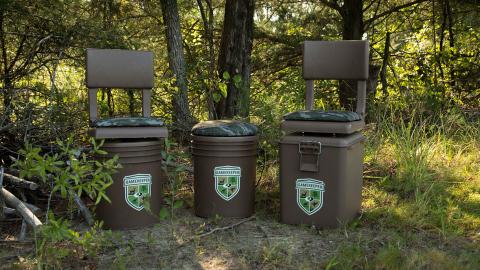Bob Humphrey

Outerwear is an important consideration in protecting yourself from the elements but it’s what you wear under there that could arguably be the most important component of your hunting wardrobe. Thus it’s no mere coincidence that base layer apparel is also the area of greatest innovation in recent years.
Wicking Good
Under almost any conditions the optimal base layer is some type of synthetic material that will wick moisture away from the skin. Wool does an okay job and like synthetics will continue to insulate when wet, but it tends to hold water and thus, become heavier. Cotton is rotten. It’s great for working or fishing in summer heat but in most other outdoor activities will prove detrimental.
The earliest examples were polyester. For those old enough to remember, this was the same material used for leisure suits during the disco era. That was subsequently supplanted with polypropylene, another synthetic, but with greater hydrophobic (moisture wicking) properties. There have since been numerous innovations but most are variants of polypropylene.
Cold Weather
Moisture wicking is important for several reasons, not the least of which is warmth. When you’re active you sweat. Water conducts heat 240 times faster than air so a wet body will lose heat much faster than a dry one. Wear a cotton t-shirt walking into your tree stand on a cold morning and you’ll be wet, cold and uncomfortable all day.
That won’t happen with poly. You may also want to consider a thicker base layer for cold weather as it will both wick moisture and have better insulating properties like Cabela’s Thermal Zone line.
Warm Weather

A moisture-wicking base layer is also important in warm weather, for several reasons in addition to comfort. One is scent control. Bacteria - the same bacteria that are responsible for human body odor - thrive in a moist, warm environment. You can’t do much about the heat, but you can certainly use the right fabric to wick moisture away reducing bacterial growth. More recently, clothing manufacturers have taken this process giant steps further by adding anti-microbial technology to the fabric.
Among the first to do this were companies like Medalist and ArcticShield. They integrated silver - a highly effective antiseptic (anti-microbial) often used in the medical profession - into the fabric. Silver works mechanically at the microscopic level through a process called ionization, wherein silver ions punch holes in bacterial membranes and once inside, bind to essential cell components like DNA. Unable to perform basic functions the bacteria die.
Another option is to treat fabric with a chemical anti-microbial solution. This alternative technology, originally developed for the military, has since been adopted by the outdoor apparel industry. Here again, perspiration is wicked away from the body and onto the fabric, where odor-causing bacteria are destroyed by anti-microbial chemicals - all of which have been tested beyond all reason to ensure they’re safe to humans. Polar Max was one of the first companies to adopt it but it’s now widespread among hunting clothing.
Several companies now use multiple technologies. Nomad Outdoor, for instance, uses a SilverZ Scent Suppression System in their apparel, infusing both silver as an antimicrobial and Zeolite, a highly porous, naturally occurring mineral by-product of volcanoes that is commonly used in filtration systems. That latter works by bonding odor molecules to its surface, and can be regenerated with a simple washing.
Pest Protection
Yet another function of base layers that people often overlook is protection from pests like ticks, which pose the risk of disease. In colder temperatures you may want a looser fitting base layer but the risk of ticks is much less. In warmer weather, you want a tight-fitting base layer to better wick moisture and destroy bacteria; and the tight layer will also prevent ticks from reaching your skin.
One of the first, and to my knowledge only product, designed specifically for this purpose was something called RynoSkin. Its primary purpose was protection, but it also did a serviceable job of moisture wicking. Now most any tight fitting synthetic will do roughly the same thing, particularly if garments are snug around the ankles and wrists. You can enhance a garment’s repellent effectiveness by treating it with an aracacide like Permethrin. Just be sure to follow the directions for applying it to the garment, not your body. And you can apply it to a mid or outer layer rather than your base layer.
There is one more use I forgot to mention. Some of the newer, hi-tech, cold-weather base layers are now made of either micro fleece or merino wool and in addition to moisture wicking and bacteria killing, they make very comfortable pajamas.






























